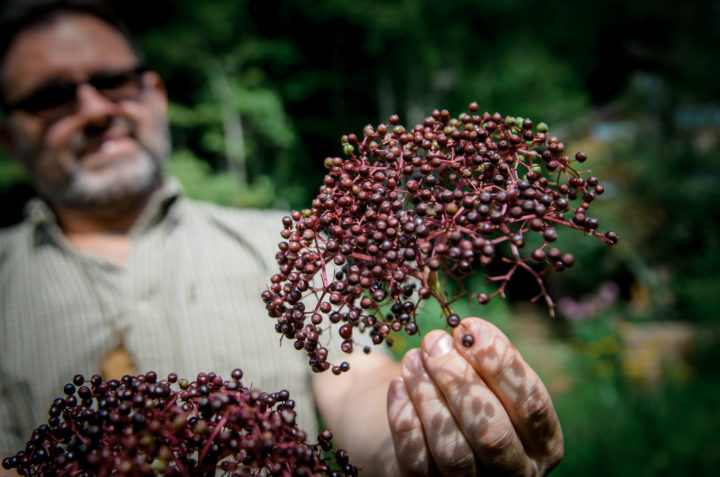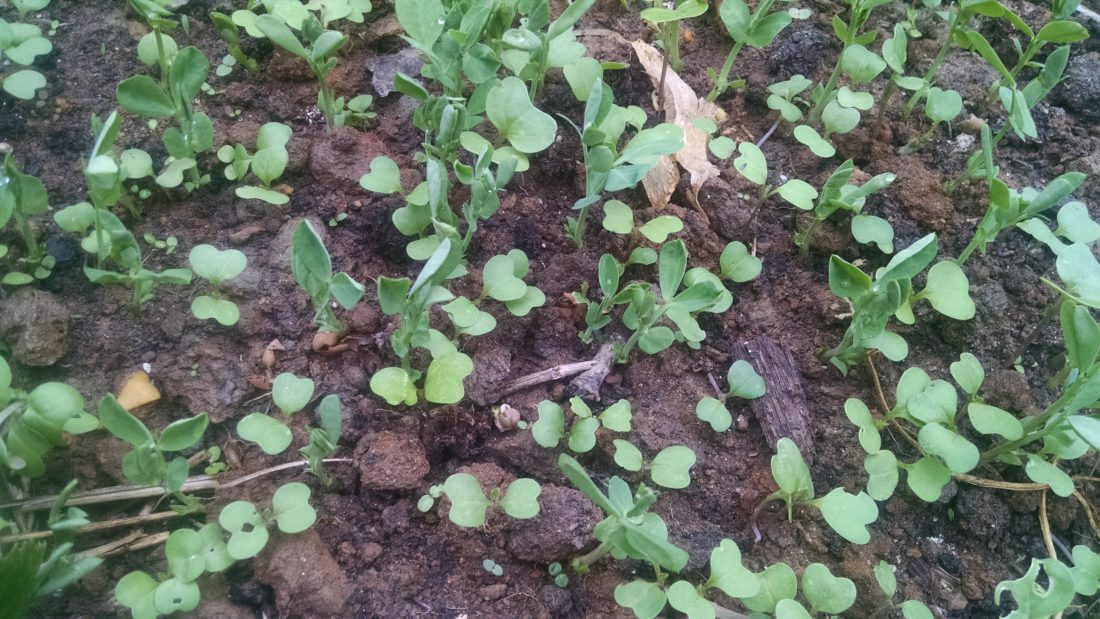Cool evenings and brisk mornings are heralding the coming fall. Soon we’ll be gazing in wonder at the display of colors that the forest puts on before those glorious trees settle down for their winter rest. Your gardens may be making a transition, too, from summer fruits to fall and winter greens, or into a state of renewal beneath mulch or cover crop. Don’t forget to send in any questions that come up to gardening@mountainx.com, and I’ll get them answered in next month’s feature, which will be the last of this calendar year.
Not too late to plant
I’ve just moved into a new place. Is it too late to plant a fall garden now?
Now is a great time to plant several crops that will ripen as the weather cools. You’ve missed the boat on some longer-lived cool weather favorites, like broccoli, cabbage, carrots and beets, but there are greens and roots galore that still have plenty of time to grow. Some suggestions are: arugula, winter lettuces (be sure you choose cold-weather varieties, many of which have “winter” in their names), turnips for greens, mustard greens, kale, cilantro, tatsoi, bok choy, spinach and radishes of all kinds.
Most of these veggies will be fine as the temperatures dip below freezing but will benefit from covering once it gets really cold. There are two main factors that limit gardening in the fall and winter: temperature and amount of sunlight. Not only do days get cooler during these seasons, but the number of hours of sunshine goes down, too. Plants grow in response to both of these influences (plus water and soil nutrients, of course). So, even if we’re in for a milder winter, crops still won’t grow much after the daily sunlight goes below about 11 hours. For us, that means most of November through January. So, the key is to get things in soon, so that they have time to grow while the sun is still shining, and the soil is still warm.

Two other crops deserve special mention. They are garlic and Austrian winter peas. Garlic is unique because it’s ideal to plant in the fall, even later than now. I’ve planted it as late as late October or even into November with great results. Since it’s sprouting from a clove instead of a seed, it’s got quite a bit of its own energy to draw from for initial growing. Plus, garlic doesn’t need any covering whatsoever, even if temperatures get down to the single digits. It’s happy to overwinter and will grow rapidly in the late winter and early spring, for a midsummer harvest next year.
Austrian winter peas (also known as field peas) are technically a cover crop, but their greens are delicious and can be harvested and eaten as pea shoots in the early spring. They feed the soil by fixing nitrogen, are an easy cover crop to manage and are full of flavor and nutrition during a time when little else has gotten going in the springtime.
Speaking of cover crops, planting them is another way to love your new garden during this time of year. Even if you don’t get in a bunch of veggies for yourself to eat, you can feed and protect the soil by planting these beneficial “green manures” that you’ll cut and potentially till in next spring. Austrian winter peas are just one option; others include rapeseed, tillage radish, winter rye (which takes some technique to remove in the spring) and some kinds of clover. If you choose a winter cover crop mix from one of our local garden stores, they’ll likely have a blend of these. It can be exciting to get a garden growing right away in a new spot, and it’s also always a great idea to begin by nourishing the soil, which cover crops do beautifully.
The secret to celery
I grew celery for the first time this year, and it took forever … plus it was tougher and more bitter than any celery I’ve ever had. How can I grow celery that’s like what I buy at the store?
Celery is fascinating to me because it’s such a common vegetable, yet many gardeners don’t choose to grow it. The long growing season has something to do with this choice. As this reader noticed, celery takes a long time to grow and mature — up to 140 days. That means that space in the garden will be taken up for the entire growing season to yield several bunches of celery. You’ve got to really like celery or have a lot of garden space to make this worthwhile. In addition to time, celery requires both high fertility (nitrogen in particular), as well as frequent watering. Without these factors, celery won’t grow very well, particularly at the end of the season as it’s maturing. Low water and fertility can cause toughness and bitterness in the stalks and are probably the culprits for those qualities in the celery this reader grew.
If you’re a celery enthusiast and feel really committed to the crop, you can plant it in really rich soil, keep it evenly moist throughout the season and feed it several times throughout the growing season by side-dressing or fertigating. These tactics can lead to celery that’s more like what you’re used to. Since this takes a lot of inputs and care, I prefer to grow a leafy cousin of stalk celery called “cutting celery” or “smallage.” This herby crop can be chopped up and added to soups, stews, salad dressings and marinades to impart a celery flavor. It’s much easier to grow than stalk celery, though it also thrives in high-moisture and high-fertility soils. The flavor of cutting celery is stronger than stalk celery, so a little goes a long way. Therefore, it doesn’t need to take up quite so much space in your garden. The downside of cutting celery is that it’s not suitable for dipping or ants on a log. This doesn’t bother me so much because I find other crunchy-snacky veggies like salad turnips, cucumbers and even carrots easier to grow than stalk celery.
Cook elderberries before eating
Are wild elderberries edible?
It’s the time of year when elderberry bushes, both wild and cultivated, droop with the weight of deep purple berry clusters. The American elderberry (Sambucus canadensis) can be found along streambeds and at the edges of forests from Venezuela to Canada, and it’s what we’ve got here in our mountains. When ripe, the berries are edible but need to be cooked first. Eating raw berries can cause nausea, vomiting and/or diarrhea. So, I repeat: edible, yes, but only after they’ve been cooked.

My favorite way to prepare elderberries is as a syrup to mix with warm water and drink during the winter to boost immunity and fight sickness. You can find a recipe and more on elderberries in a blog post I wrote about them for Wild Abundance: Elderberry Syrup Recipe, Plus Edler Botany and Lore. Other folks like to make pies or jams, which I’m sure are also delightful. Since elderberries are pretty easy to identify, they’re a good foraging crop for beginners, but do make sure you’ve got a proper identification before eating any.




Before you comment
The comments section is here to provide a platform for civil dialogue on the issues we face together as a local community. Xpress is committed to offering this platform for all voices, but when the tone of the discussion gets nasty or strays off topic, we believe many people choose not to participate. Xpress editors are determined to moderate comments to ensure a constructive interchange is maintained. All comments judged not to be in keeping with the spirit of civil discourse will be removed and repeat violators will be banned. See here for our terms of service. Thank you for being part of this effort to promote respectful discussion.